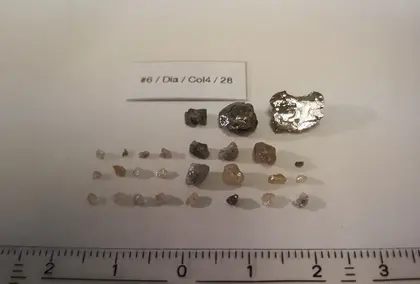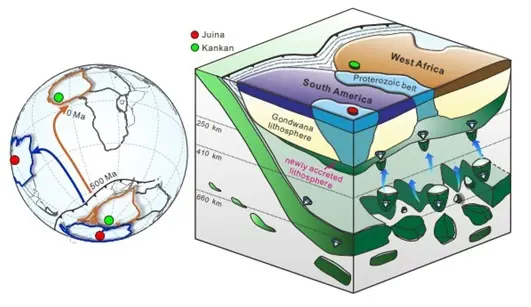Researchers unveiled on October 18, 2023, that diamonds contain evidence of the mantle rocks that supported the growth of the ancient supercontinent Gondwana from below. Led by Suzette Timmerman, formerly of the University of Alberta and now at the University of Bern, the study included Carnegie’s Steven Shirey, Michael Walter, and Andrew Steele. Published in Nature, their findings highlight how super-deep diamonds offer insights into the growth and formation of supercontinents.
Earth’s Tectonic Dynamics
The landmasses of the Earth have been continuously reshaped by plate tectonics, leading to the periodic formation of massive supercontinents. The result of the large-scale convection of Earth’s mantle is the formation of these supercontinents. Being young, oceanic crust often sinks beneath the Earth’s surface through subduction, while the continental crust offers only a limited glimpse into Earth’s deep processes.

Insights from Superdeep Diamonds
It was discovered by the research team that superdeep diamonds, formed between 300 and 700 kilometers below Earth’s surface, can reveal how material was added to the base of a once-dominant supercontinent. “These diamonds allow us to see how deep plate tectonic processes relate to the supercontinental cycle,” Steven Shirey commented.
Historical Context of Gondwana
The supercontinent Gondwana is believed to have formed between 800 and 550 million years ago during Neoproterozoic times. Beginning over the present-day location of the South Pole, Gondwana eventually incorporated regions that now constitute South America, Africa, the Middle East, India, and Australia. “By revealing the geological processes that contributed to Gondwana’s growth, scientists can better understand the forces that shaped Earth’s history and phenomenon of continental stability, which is—of course—fundamental to the eventual success of life on our planet,” Michael Walter added.
Similar Posts
Mantle Keels and Diamond Inclusions
About 40 to 250 kilometers beneath the surface, geologic formations called mantle keels act as the foundation for the continental crust. Formed from material that thickened, stabilized, and cooled under continental blocks, these mantle keels are strong and buoyant structures that can withstand Earth’s tectonic forces. Superdeep diamonds contain remnants of the mantle rocks that contributed to the formation of these keels. These diamonds have inclusions, which are typically considered flaws in gem diamonds, but are invaluable to geoscientists. These inclusions were meticulously studied to determine their geologic ages.

Collaborative Research and Findings
The research involved collaboration between the University of Alberta, the Carnegie Institution for Science, and other diamond specialists globally. Emphasizing how minute amounts of material can provide insights into the evolution of Earth’s vast continental landmasses. The age of the inclusions in the diamonds indicates when buoyant mantle was added to Gondwana from below, aiding in the growth of the supercontinent.
Diamonds and Earth’s History
The diamonds from Juína, Brazil, contained inclusions that could be indicative of interactions between slab-derived CA-carbonated melt and peridotite. Insights into the relationship between peri-Gondwana subduction, diamond formation, and the subsequent evolution of Gondwana are offered by the age data from the diamonds. The diamond’s trace element patterns and isotope ratios provide clues about their formation and the processes that shaped them. The importance of diamonds as windows into Earth’s deep history and the processes that have shaped our planet is underscored by the study’s findings. With their unique inclusions and ages, these diamonds serve as time capsules, preserving records of ancient geological events. Light on the mysteries of supercontinents and the role of diamonds in understanding Earth’s evolution has been shed by the collaborative efforts of researchers from various institutions. Diamonds emerge not just as precious gems but as invaluable tools for geological exploration, as science continues to unravel the secrets of our planet.

















![A male [[Great white shark]] off [[Isla Guadalupe]], [[Mexico]]. Along with many [[Mackerel scad|Mackarel scads]] seen in the background. Photo Source- Terry Goss (CC BY-SA 3.0)](https://www.karmactive.com/wp-content/uploads/2025/06/White_shark-720x480.jpg)